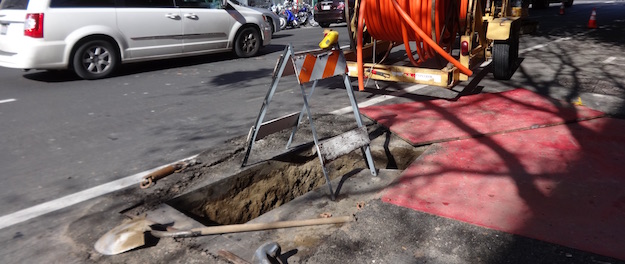
The need for open trench notification policies is particularly acute when a local agency restricts future cuts into a given street, after the completion of a trenching or repaving project. But the need to rapidly respond to changes in the broadband industry and market conditions means that a new, or newly expanding, competitive Internet service provider is a disadvantage if, say, a five year moratorium was put into effect on a particular street three years ago, before the company was even founded.
San Francisco puts a five year moratorium on utility trenching and other excavations after work is done on a street, which is one of the many factors Webpass is citing as reasons for the California Public Utilities Commission to remove restrictions that AT&T places on use of its existing conduit…
In many areas, such as San Francisco, the ability to use aerial facilities is limited, which requires Webpass to install a good portion of its facilities, such as fiber optic cabling, underground. While Webpass has authority from the [CPUC] to construct its own underground conduit systems and other support structures…it is generally uneconomical and, due to the imposition of moratoriums and other restrictions on trenching within roadways, often highly impractical, to do so. Therefore, like other CLECs, Webpass must rely on the availability of unused capacity in existing utility infrastructure, such as that owned by AT&T California.
Competitive carrier access to incumbents’ conduit is required in California, but, as Webpass’ fight shows, it is not always graciously granted or, to be fair, always possible. And even if it were, there’s still the problem of what to do if there’s a street cut moratorium that results from a project that didn’t include conduit. If it’s not there, it can’t be accessed.
That’s why shadow conduit policies and close review of conduit capacity when encroachment permits are granted is necessary. If a utility – telecoms or electric – wants to install conduit in a street and trigger a street cut moratorium, then one of the requirements should be the installation of sufficient capacity – bigger or more conduits – to meet future demand. The other alternative is for the public agency granting the encroachment permit to install publicly conduit at the same time – a shadow conduit policy. That’s also baked into San Francisco’s ordinances, but it’s unclear as to how diligently it’s being pursued.
More information about dig once, open trench, shadow conduit and similar policies are on my Policy Bank page.
